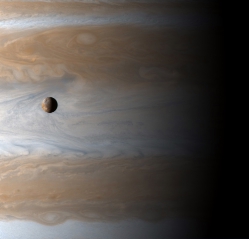Early July, 1947, something crashed near Roswell. Rancher W.W. “Mac” Brazel rode his horse to check on the livestock after a thunderstorm the night before. On the ride Brazel noticed debris that scattered over a rather large area. Brazel reported the sighting to Sheriff George Wilcox, who went on to report the incident to Major Jesse Marcel of the 509th Bomb Group. A couple days later, on July 8th, 1947, Colonel William Blanchard, the Commander of the 509th Bomb Group, issued a press release saying that the wreckage of a crashed disk has been recovered. Not long after the news another press release was issued, correcting the first version by saying that a weather balloon was mistaken for a flying saucer.
Following the incident, Major Jesse Marcel was assigned to investigate. According to Major Jesse Marcel, there were metals in the debris that were lightweight and heat-resistant, and some I-beam structures with strange characters on them. Marcel was then directed to General Ramey, Command Officer of the Eighth Air Force, to report on the incident. Some pieces of the debris from the crash were supposedly place on Ramey’s desk. Aversion of the story was that when Marcel and Ramey returns from a trip to the crash site, the debris on the desk has been replaced with a deflated weather balloon. General Ramey then told the media that it was a weather balloon that crashed. From that day people believed that it was a cover-up.
Many locals tried to take a peek at the crash site, where crews were busy clearing the area, but people were told to leave the area when they approached the site. To this day many still believes that the Roswell Incident was a big cover-up, and there WAS a flying saucer that crashed, along with the bodies of extraterrestrial life.
Below is a description of the debris by Jesse A. Marcel, son of Major Jesse Marcel (3):
“There were three categories of debris: a thick, foil like metallic gray substance; a brittle, brownish-black plastic-like material, like Bakelite; and there were fragments of what appeared to be I-beams. On the inner surface of the I-beam, there appeared to be a type of writing. This writing was a purple-violet hue, and it had an embossed appearance. The figures were composed of curved, geometric shapes. It had no resemblance to Russian, Japanese or any other foreign language. It resembled hieroglyphics, but it had no animal-like characters …”

